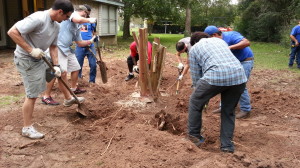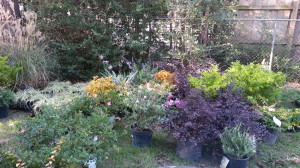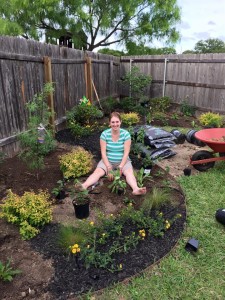 If you didn’t read the article on Hiring an Installer, then I recommend it before continuing. The same concepts will apply. With a DIY project, service must be the highest priority on your list. You will need the help of a team of professionals who have done it before to “do-it-yourself,” and you will need to act as an installation company would to determine when you should install, how long it will take to complete your installation, delivery, material sourcing, etc.
If you didn’t read the article on Hiring an Installer, then I recommend it before continuing. The same concepts will apply. With a DIY project, service must be the highest priority on your list. You will need the help of a team of professionals who have done it before to “do-it-yourself,” and you will need to act as an installation company would to determine when you should install, how long it will take to complete your installation, delivery, material sourcing, etc.
First, find a design company (HDG Landscape Design or Easy Landscape Plan) that will not ask you to install with their company. Design-build firms have less design experience in a calendar year because a majority of their time is spent selling and installing landscape installations. Design-build firms focus on a short plant list that they have access to or in unfortunate cases they will select materials they know a home owner cannot find on their own in order to encourage an installation with their company. Design-build firms are fantastic for their knowledge and experience with installation, but they are not likely to be the right resource if you want to save money with a DIY. HDG Landscape Design and Easy Landscape Plan are design exclusive companies offering plant size recommendations to work within a budget, phasing recommendations, plant images and descriptions to assist with care of your plants after installation, and a material spreadsheet for easy purchasing.
The material spreadsheet and plant descriptions are a valuable resource. They will assist you in understanding the design as well as the recommended material sizes to purchase in order to have a landscape that makes sense when it is installed. They will also help you with future maintenance (mulch replenishment and how to maintain plants). The plant sizes on the material spreadsheet give advice as to how large a plant material should be purchased. Larger sizes are recommended for slower growing plants or accent plants, and smaller sizes are recommended for the shortest layer or fastest growing plant. These sizes can be manipulated to decrease or increase the final installation cost, but be aware that your team has tried to select the best sizes for you already with all variables considered.
Pick a nursery with staff that can make time for you when you are ready to purchase and know about plants and plant varieties. A trained nurseryman will take your material list and go with you to select all the plants you need. If they don’t have the quantity in stock that you need, then they will be able to understand the importance of the particular missing plant in your design and will not recommend something that is not comparable. Even better, they are likely to recommend you to a nearby nursery that does have more of the same plant in stock or offer to call you when they have more in their inventory. For the Houston area, we recommend The Arborgate in Tomball, Texas. HDG Landscape Design has several clients that drive 150 miles round trip to purchase from and gain the expertise of the trained professionals and visiting lecturers at The Arborgate.

Ask your material sources if they have delivery options. If you do not have a vehicle that can haul a lot of weight, then be willing to pay for a delivery from each vendor which can range from $45-$85 (mulch & soil, plants, etc.).
If you are not willing to do the behind-the-scenes work along with your team of professionals, then DIY might not be the right fit for you. Consider comparing the cost estimates in the “Hiring an Installer” section to determine if DIY really is more affordable with the time and effort you will need to put into it.
If you do not know where to start, then it is best to start by Hiring a Designer. HDG Landscape Design provides a well thought out design to meet your needs. It does help to know your goals up front, but HDG has experience with every type of property and knows the right questions to ask to help you find your answers.


Quick Budgeting Tips
Imagine the front yard of the most beautifully landscaped house on your street. If you like how many layers of plants they have, then calculate how deep their beds are from their foundation. If you cannot measure that, then estimate by assuming that each large/medium shrub in the layer takes up 3 feet of depth and each small shrub/perennial/ground cover takes up 18 inches of depth. Multiply the desired depth of the beds by the linear footage of your foundation (or location where you intend to install plant material). We will assume that you either do not have an irrigation system and will hand water or you know how to adjust your own irrigation system. We will assume you can remove plants on your property without buying additional equipment to do so, and that you already have the equipment you need to install. With only a few variables to consider (standard sized plants (small), new soil, new mulch, no purchased delivery) your estimated cost for a landscaped bed area can be between $10- $12 per square foot without tax.
Check out our links below to get a better understanding of costs and hiring professionals.